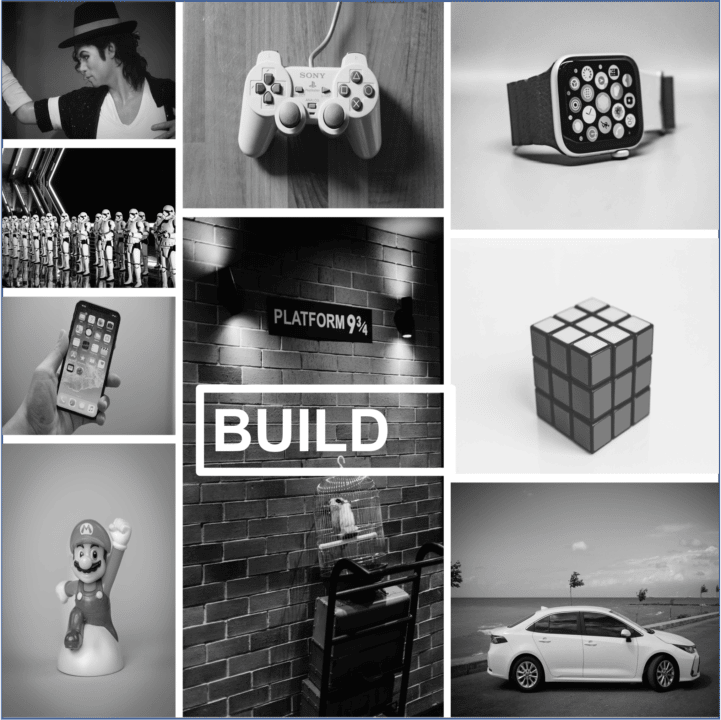Building great products
Even if you flawlessly follow the approach outlined in Designing Great Products, it does not guarantee that your new product will be wildly successful. In this stage you must negotiate delivery schedules and priorities with the Engineering team, while closely monitoring the market, customers, technologies, and your competitors to see whether the playing table has changed. Building great products can be as much work as designing a great product.
The Product team needs to be flexible enough to adjust the schedule for surprises, like a global pandemic, your programming team has a week-long holiday during the Build phase, or a quality (or supplier) problem causes a 6 week slip. And to complicate the build process further, generally the customer knows their challenge but not how to solve the problem in an innovative, scalable, pleasing, secure, ethical, and intuitive manner that they will love while not messing up quality, reliability, and performance. Your product must fill this gap to be successful.
Products That Count can help
At Products That Count, we believe that everyone can design, build, and launch great products that transform lives and create value at scale.
Products That Count has thousands of free resources to help when building great products. Our podcasts, eBooks, videos, articles, blogs, and infographics will help you learn the craft of product
Our resources are straight from the minds of C/VP-level product leaders from companies such as Netflix, Amazon, and Etsy, who understand the unique challenges of product management. These diverse product executives are actively engaging in solving similar challenges to what you’re encountering in your product roles and are excited to share how they’re doing it. Learn how to build great products from practitioners, not consultants.
Here’s how to start
Your approach to building great products should include these steps:
- Prioritization – compromises will need to be made as you work with the Engineering team and customer stakeholders to lay out the delivery schedule for the capabilities and features of your new product. Product Management must work with Engineering to identify the number and content of each sprint, as well as address stakeholder feedback.
- Product Lifecycle – there are many ways to differentiate the stages of a product. The 2021 Product Awards used the categories: Conceive, Design, Build, Collaborate, and Operate. Most product lifecycle approaches follow a bell curve that includes some form of product introduction, growth, maturity, and eventual decline.
- Processes, Tools & Frameworks – Framework, tools and processes simplify cross-functional teams make & communicate decisions, including tradeoffs across Scope, Cost (typically development resources in this phase), and Time.
- A sizing methodology and process will be required.
- Tools and processes will be used for change management, reporting, schedule tracking, and managing development status.
- A/B testing and experimentation will ensure you build the right product.
- Performance testing tools may be needed.
- If open source or products from other companies are embedded in your offering, they will need to be tracked.
- and lastly, Engineering teams have found that building analytics and problem determination into the product will simplify debugging problems before and after ship.
- Customer focus – How will your customer stakeholders be involved in the development process? Will they receive incremental deliveries prior to launch? How will you their capture insights regarding product features, their user experience (UX), and the overall customer journey? And how will those insights influence your planned offering.
- Market & Customer Research – market and customer needs will change during the Build process. Innovative new technologies may be available that didn’t exist when you were designing your product. Stay on top of what’s going on. Be willing to change features, pricing, target users / markets, and the GTM Strategy so your new offering can be successful. A wise Product team will recognize if a proposed product needs to be abandoned due to a market, technology, or competitor pivot.
- Competitive Analysis – your competitors will not stand still while you’re developing your great product. Monitor what they’re saying and shipping, and compare it to your proposed offering (SWOT). Be prepared to adjust your product plans and priorities.
- Sustainability – this is about efficient use of resources, whether tangible (e.g., manufacturing materials, people) or intangible (e.g., time).
- Measuring Success – what metrics and KPIs will determine whether your product is being built successfully. Typically metrics during the Build stage revolve around sprints, schedules, velocity, quality, and priorities. How will you capture and report the KPIs? What insights will you derive from the data? What are stakeholders saying as they see interim incarnations of your new product?
Use the best tools for building your product
The 2022 Product Awards from Products That Count celebrate the tools that give Product Managers their superpowers, enabling them to deliver market-leading products & services that delight existing customers and bring in future customers across current and new markets. Check out the Product Award Series to learn about the award-winning products that you should be using to build great products, including
- Address scale & complexity – take your product to the next level. This includes to new platforms, new integrations, new partners, new users, and new markets.
- Responsive Product Accountability – define and communicate success metrics to help business leaders chart their direction.
Continue the journey
Need more help?

Personalized Mentorship will turn your Product team into a competitive advantage so you can win as a market leader. This paid offering will
- offer guidance to transform your company to be Product-Led,
- provide continuous PM training and ongoing mentoring to level-up your Product team,
- train PMs and PLs that are new to their roles,
- help executives establish consistency and structure in the midst of Product Team restructuring, growth, and M&A activities,
- share best practices for product management and leadership.
Click the green “Live Chat” button to the right to talk with a Products That Count staff member about the Strategic PM Bootcamp and Personalized Mentoring for your Product Team.



